|
Full resolution versions of wildflower photos available on flickr. 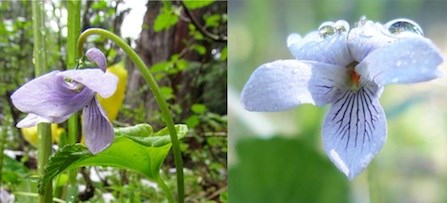
Left: NPS/C. Vecchio; Right: NPS Photo Alaska VioletViola langsdorfii This small violet has round to heart-shaped leaves and grows to be about 6 inches (15 cm) tall. Distinguished from similar violet species by a sack-like spur on the back petal (as shown in left image); this violet can be found growing in moist meadows and along stream banks. 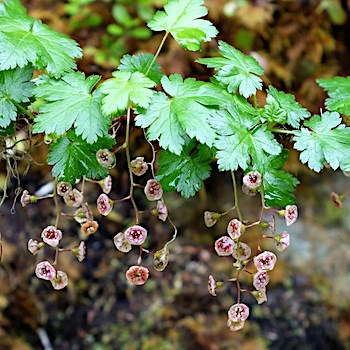
NPS Photo Black Swamp GooseberryRibes lacustre 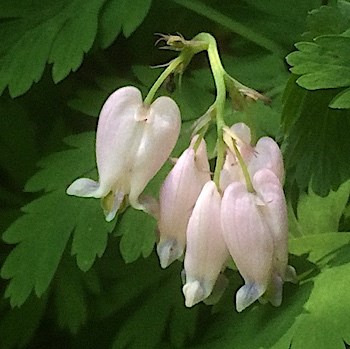
NPS/M. Schmitt Photo Bleeding-heart, PacificDicentra formosa 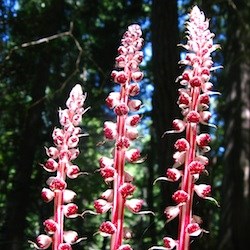
NPS, Bev Killam CandystickAllotropa virgata Completely lacking green leaves, this plant grows as a single stem marked with red and white stripes. Each flower has red-brown sepals but no petals, and underneath each flower is a small scale-like leaf. Candystick are mycotrophic, which means instead of using photosynthesis to get energy, they form a complicated three-way relationship with fungus and coniferous fir trees to survive. The candystick draws energy from the fungus associated with its roots. The fungus in turn derives energy from tapping into the roots of fir trees. With no need for the sun, candystick can be found in shady, deep woods. 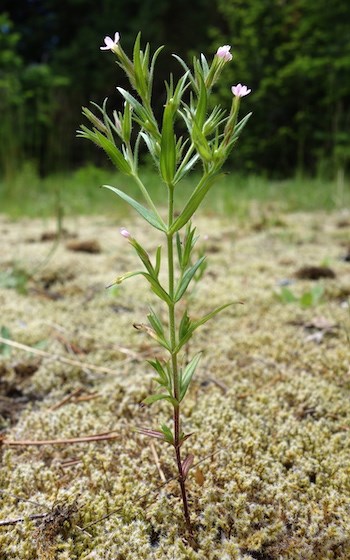
NPS Photo Collomia, Narrow-leafCollomia linearis 
NPS Photo Collomia, Variable-leafCollomia heterophyllaAlso known as "mountain trumpet", this wildflower has small, five-petaled pink flowers with a white eye at the throat of the fused petals. It has branched stems, less than 8 inches (20 cm) tall, with lobed leaves. Leaves on the upper stem may be undivided. Widespread in the park at lower elevations. 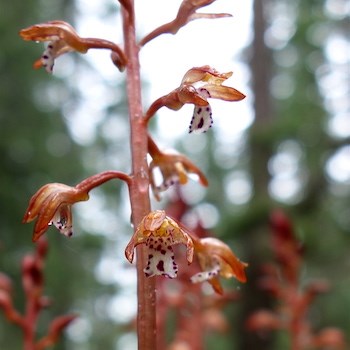
NPS Photo Coralroot, SpottedCorallorhiza maculata Stems are between 7-22 inches (17-55 cm) tall, and usually grow in clumps in the understory of dense forest. Similar to western coralroot with reddish-purple to yellow-brown stems, but flowers have a white lower lip with red to purple spots. Less common than western coralroot. 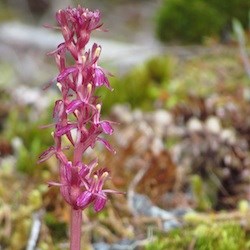
NPS, Crow Vecchio Coralroot, WesternCorallorhiza mertensiana Stems are between 6-16 inches (15-40 cm) tall, and usually grow in clumps in the understory of dense forest. Stems are typically reddish-purple, though coloring can range from pink to yellow as well. 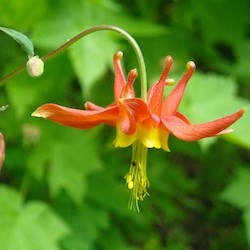
NPS, Chris Roundtree Crimson ColumbineAquilegia formosa Leaves are mostly basal with three main lobes, each main lobe further divided into three lobes, and bluish-green in color. Usually found growing along streams and the edges of meadows between 2,500-5,500 feet (760-1,670 m) elevation. 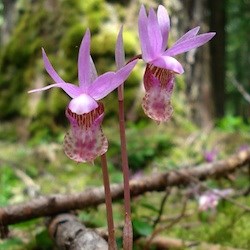
NPS Photo Fairy SlipperCalypso bulbosa Also known as a Calypso orchid, this beautiful flower is a hidden treasure of Mount Rainier's forests. A single flower, barely reaching a height of 6 inches (15 cm), emerges from a bulblike corm, with only one dark green egg-shaped leaf per plant. Fairy slippers have delicate, easily-damaged root systems, and can be hard to spot among the thick moss carpeting forest floors. If you are fortunate enough to find a fairy slipper, please take care to avoid trampling them. 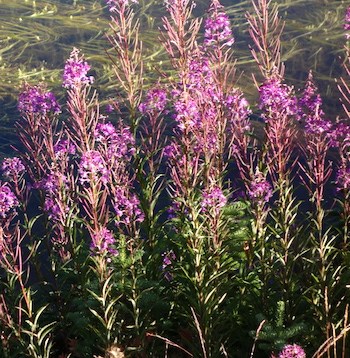
NPS Photo FireweedChamerion angustifolium Very common at low elevations in the park, fireweed can color whole hillsides with its distinctive magenta flowers. Stems are about 3-6 feet (1-2 m) tall, with numerous, alternating lance-like leaves, and topped with a cluster of dense flowers. 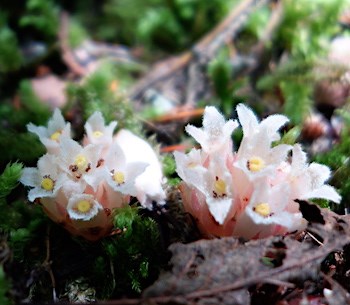
NPS Photo GnomeplantHemitomes congestum 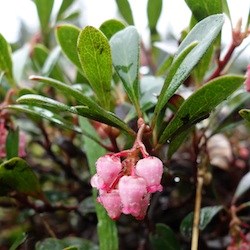
NPS Photo KinnikinnickArctostaphylos uva-ursi A common evergreen shrub, kinnikinnick often forms mats on dry slopes, forest clearings, and other exposed sites. Leaves are leathery and oval-shaped, alternating along tough reddish stems. Drooping, urn-shaped pink flowers give way to bright red berries. Kinnikinnick is also known as common bearberry. 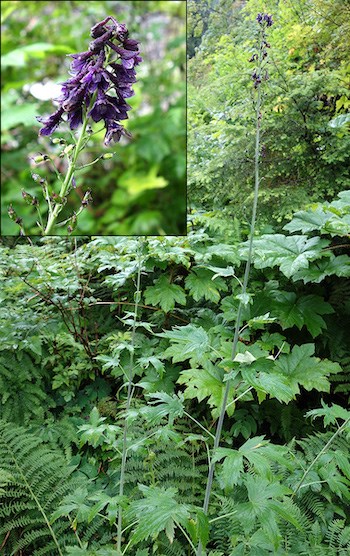
NPS Photo Larkspur, TallDelphinium glaucum 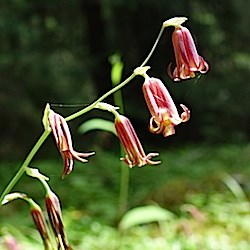
NPS Photo MountainbellsStenanthium occidentale Also known as "bronze bells", this plant is marked by bell-shaped brown-purple flowers. Flowering stem is 6-16 inches (15-40 cm) tall, with two or three grass-like basal leaves. Common in moist forests. 
NPS Photo Paintbrush, HarshCastilleja hispidaThis paintbrush has three-lobed bracts (leaves) that can be red, bright to pale orange, or even yellow. The roughly hairy stems are 12-20 inches (30-50 cm) tall. Common on dry soils, particularly along roads, up to around 4,000 feet, though occasionally found in subalpine zones on the drier east side of the park. 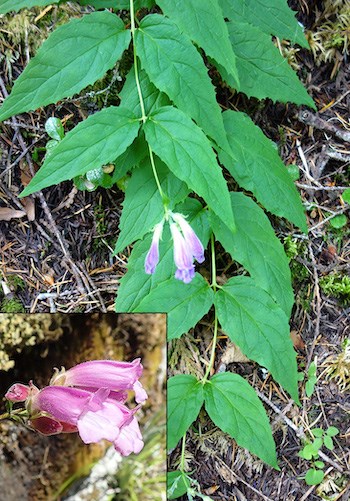
NPS Photos Penstemon, WoodlandNothochelone nemerosa 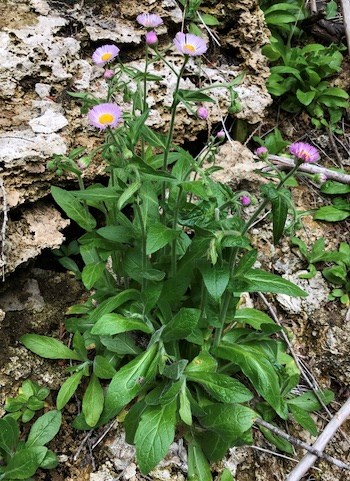
NPS Photo Philadelphia FleabaneErigeron philadelphicus 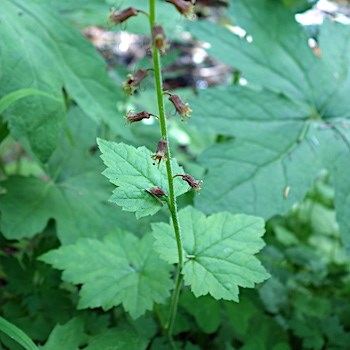
NPS Photo Piggyback PlantTolmiea menziesii 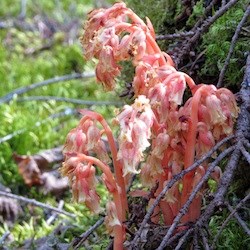
NPS, Crow Vecchio PinesapMonotropa hypopithys This mycotrophic plant is usually found growing in clumps in old coniferous forests. A single stem grows to be 4-16 inches (10-40 cm) tall, and can range in color from yellowish-brown to the occasional bright red. 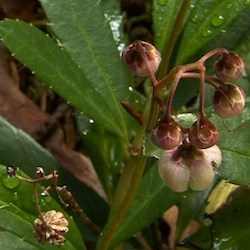
NPS Photo PippsissewaChimaphila umbellata Pippsissewa is a dwarf evergreen shrub, with elliptical, toothed, shiny green leaves. Each plant has a loose cluster of several whitish-pink to rose colored flowers. Commonly grows on well-drained forest slopes throughout the park. 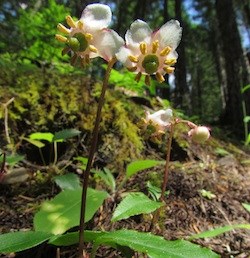
NPS, Crow Vecchio Pippsissewa, LittleChimaphila menziesii Also known as Menzies' pippsissewa, this dwarf shrub is smaller than its relative pippsissewa (C. umbellata), only growing to be about 6 inches (15cm) tall. Leaves are lance-shaped to oval, and bluish green. Flowers tend to be paler white-pink. Little pippsissewa is much less common than pippsissewa, though they can be found growing together in similar terrain. 
NPS Photo Red-flowering CurrantRibes sanguineumThis large shrub has numerous bright, reddish-pink flowers in long, stalked clusters. Each flower is a narrow tube, about half an inch long (1.5 cm), with flaring sepals (petal-like bracts). The leaves have 3-5 rounded, finely-toothed lobes, hairy on the underside. Found in low elevation forests, often along roadsides. 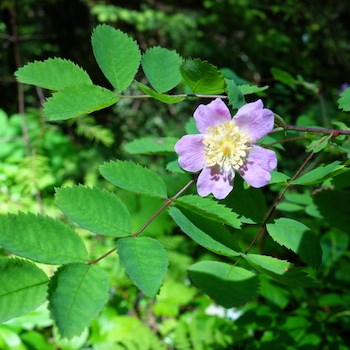
NPS Photos Rose, BaldhipRosa gymnocarpa This shrubby rose has one to three pink flowers on each stem, with large petals about 0.3 inches (10 mm) long. Leaves have 5-7 toothed leaflets. Also known as wood rose, it commonly grows in open woods and forested slopes. 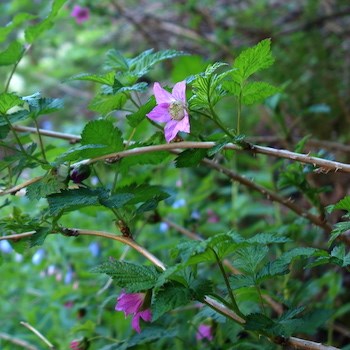
NPS Photo SalmonberryRubus spectabilis 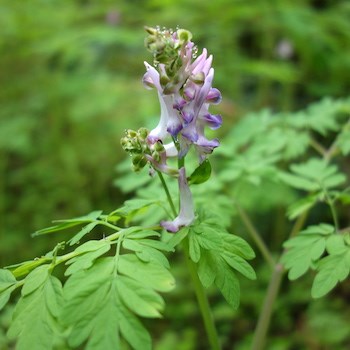
NPS Photo Scouler's CorydalisCorydalis scouleri 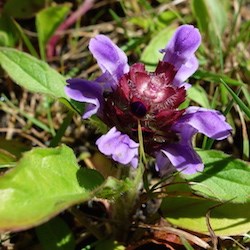
NPS Photo Self-healPrunella vulgaris Spreading along root stocks, this plant has basal, dark green leaves and a short, hairy spike-like flowering stem. The blue-purple flowers have two lips; the upper arching over like a hood, while the lower lip has three lobes. Prefers moist, shaded-to-sunny forest openings and roadsides, up to 4,000 feet (1,219 m). 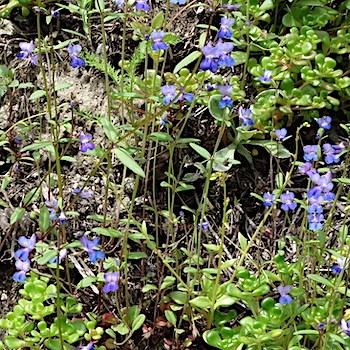
NPS Photo Small-flowered Blue-eyed MaryCollinsia parviflora This charming forest wildflower has tiny 0.15-0.3 inch (4-8 mm) two-lipped blue flowers. The flower upper lip has two lobes, while the bottom lip has three lobes. Leaves opposite along the short stems with flowers clustered at the top. Easy to miss among grass or other groundcover plants. 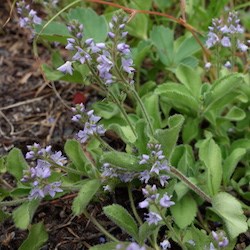
NPS Photo Speedwell, CommonVeronica officinalis Also called forest speedwell, this plant is far less common than its subalpine cousin Cusick's speedwell (Veronica cusickii). Leaves and stem are finely-hairy, and leaves toothed (Cusick's leaves have no teeth). Found at low elevations, such as near park entrances and in Longmire. 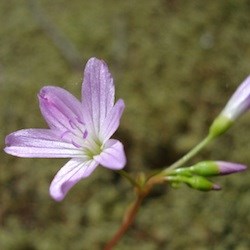
NPS Photo Spring BeautyMontia parvifolia
Often found growing in large patches on moist rocky outcrops or stream banks, this plant has small oval basal leaves with a few alternating leaves along a reddish-colored stem. Flowers are small, only about 0.1-0.5 inches (7-15 mm) long, and there are three to eight flowers per stem. Also known as little-leaf miner's lettuce or little-leaf montia.
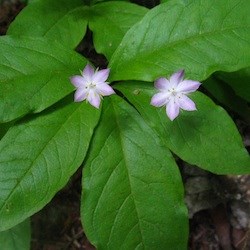
NPS, Bev Killam StarflowerTrientalis latifolia This plant has 4-7 leaves clustered at the top of a 4-12 inch (10-30 cm) tall, slender stem. Flowers have 5-9 petals, though 6-7 petals most common, pink to rose in color. A related species, northern starflower (Trientalis europaea) has white petals and is slightly shorter. 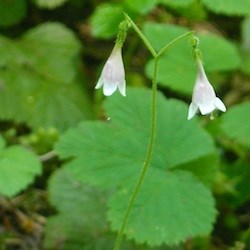
NPS Photo TwinflowerLinnaea borealis Spreads on long running stems with upright stems branching off that support the distinctive paired flowers. Leaves are oval, toothed, and evergreen. The flowers range in color from pink to whitish-pink, and have the faint scent of almond. Very common throughout the park, often found carpeting sections of the forest floor. 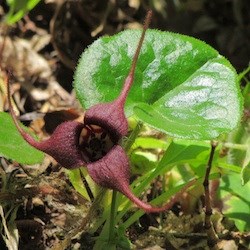
NPS, Crow Vecchio Wild GingerAsarum caudatum Leaves are heart-shaped and supported on slender stalks 4-6 inches (10-15 cm) tall. Flowers are usually tucked beneath the leaves, and have no petals. Instead, three wide, purplish-brown sepals form a cup. Named for the strong scent of lemon-ginger it exudes when crushed, wild ginger is believed to have medicinal properties, historically utilized by many native tribes. Relatively uncommon, but keep in eye out for this unusual plant in the Nisqually and Ohanapecosh valleys. 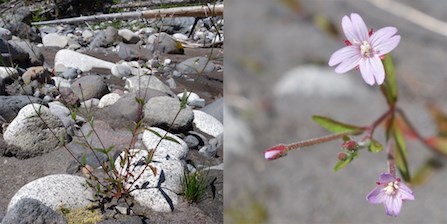
NPS Photo Willowherb, Small-floweredEpilobium minutum Slender-stalked, with oval- to lanced-shaped, finely-toothed leaves spaced in opposite pairs along the stalk. Flowers are 4-lobed and pink. Uncommon in the park, this plant is found in drier, open woods and along roads. 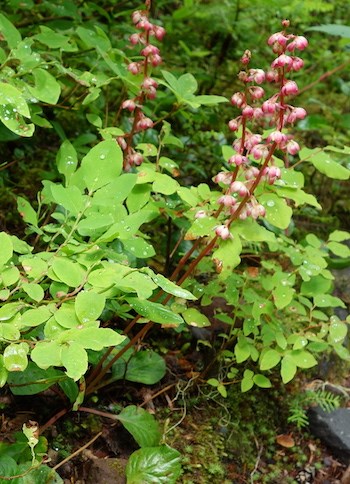
NPS Photo Wintergreen, PinkPyrola asarifolia Return to Wildflower Guide |
Last updated: April 2, 2025
